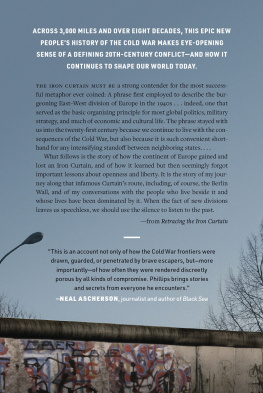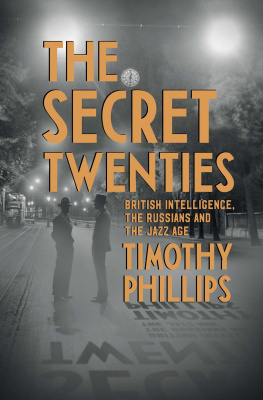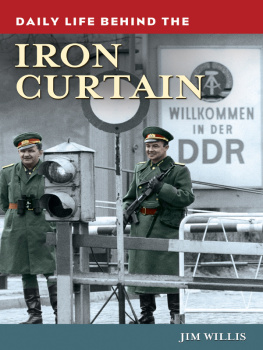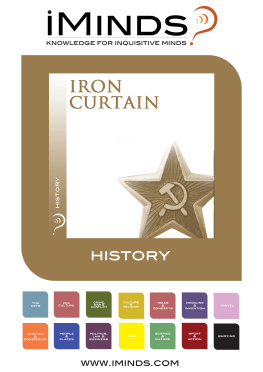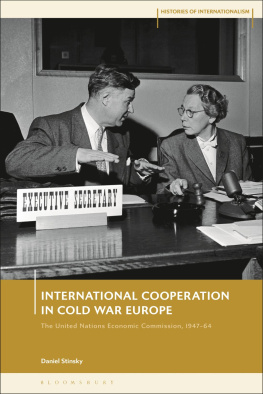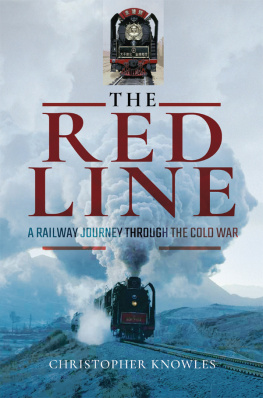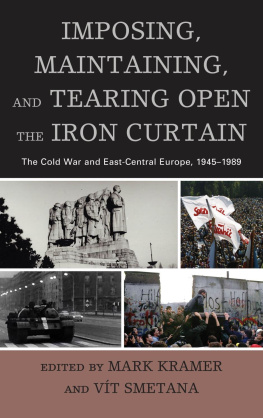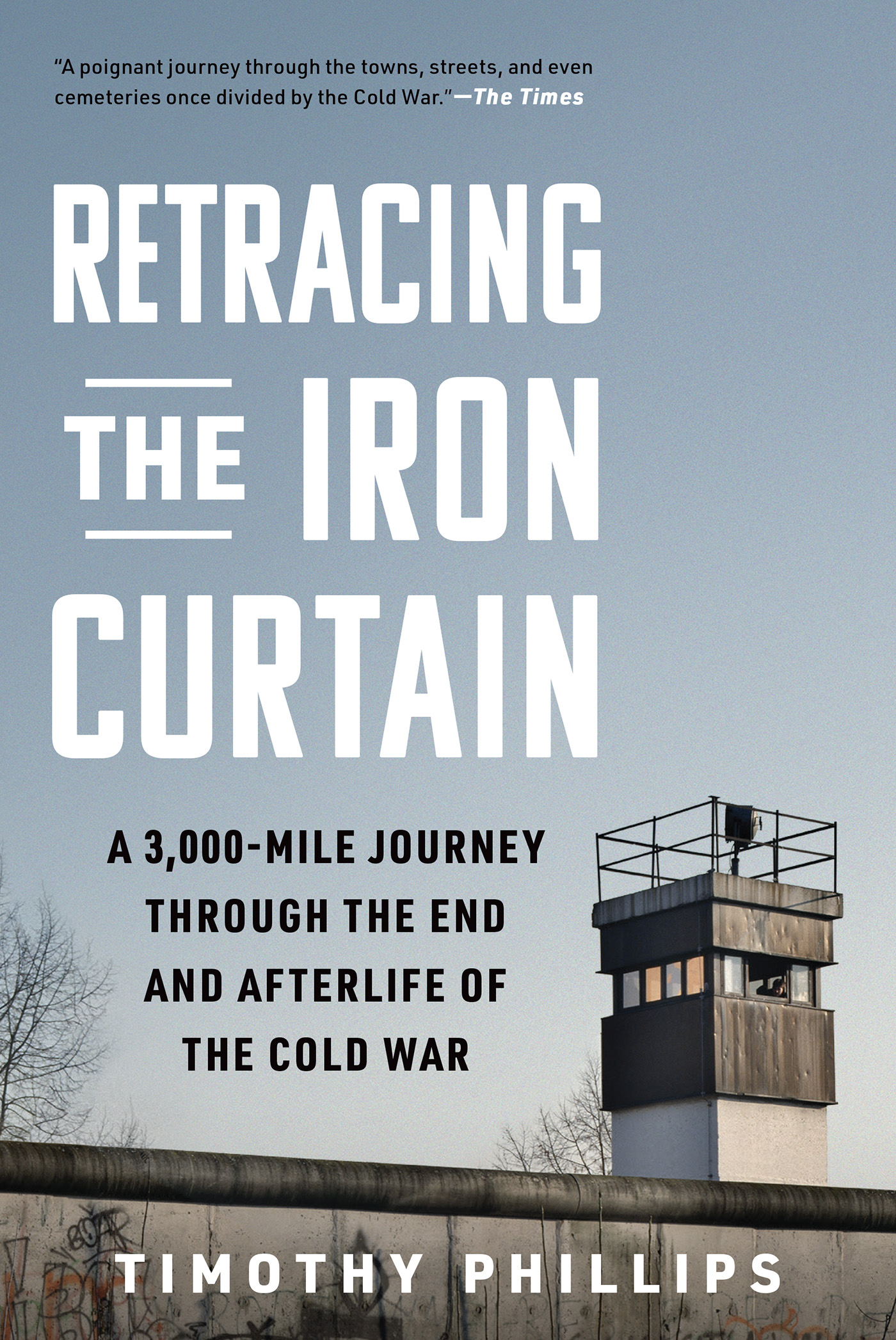Contents
Guide
Page List
A lso by T imothy P hillips
Beslan: The Tragedy of School No. 1
The Secret Twenties:
British Intelligence, the Russians and the Jazz Age
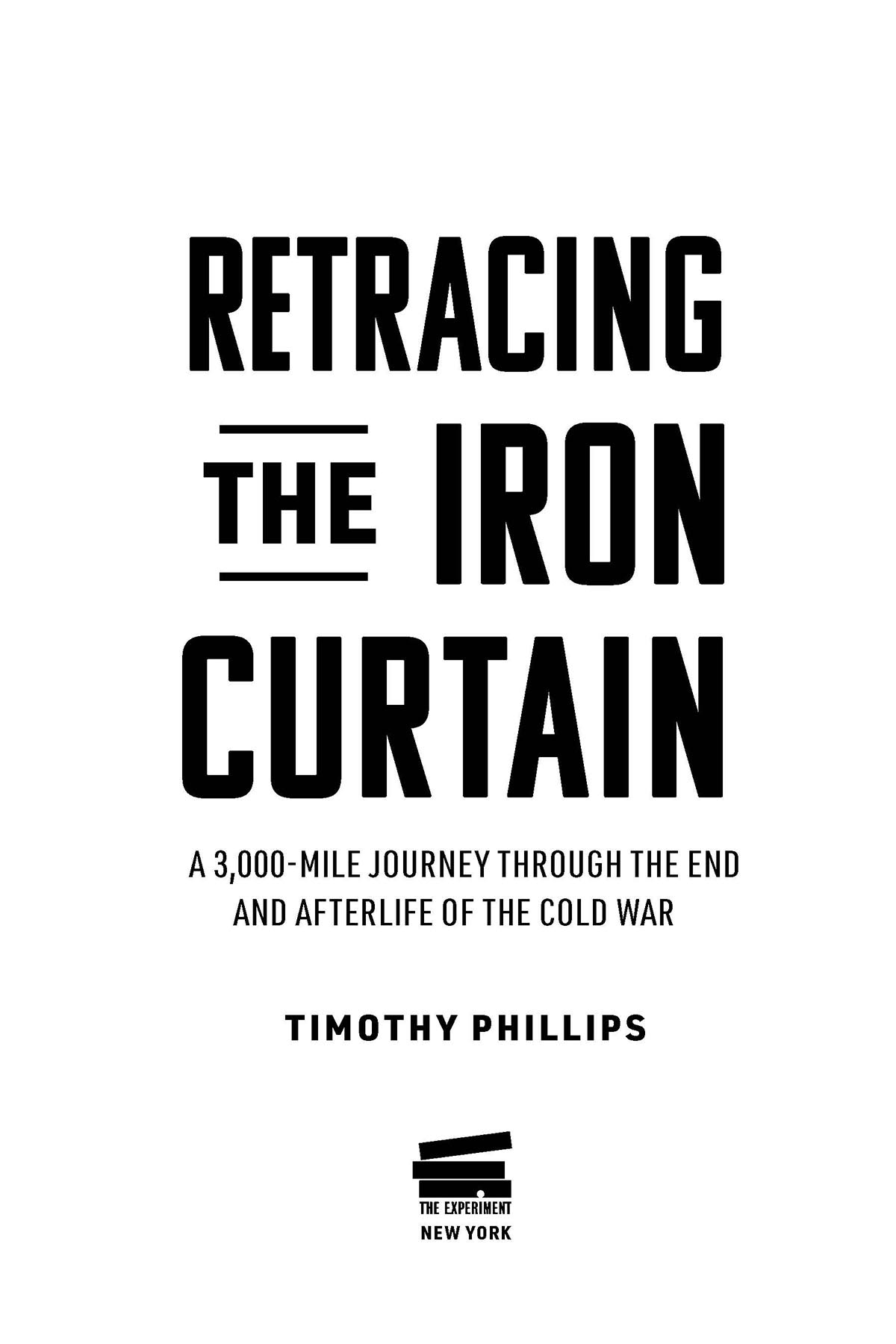
R etracing the I ron C urtain : A 3,000-Mile Journey Through the End and Afterlife of the Cold War
Copyright 2022 by Timothy Phillips
is a continuation of this copyright page.
The quotations from Haruki Murakami on pages vii and 393 are copyright 2009 by Harukimurakami Archival Labyrinth. Reprinted by permission of ICM Partners.
First published in Great Britain by Granta Books 2022
Originally published in Great Britain by Granta Books under the title The Curtain and the Wall: A Modern Journey Along Europes Cold War Border, copyright 2022 by Timothy Phillips
First published in North America by The Experiment, LLC, in 2023
All rights reserved. Except for brief passages quoted in newspaper, magazine, radio, television, or online reviews, no portion of this book may be reproduced, distributed, or transmitted in any form or by any means, electronic or mechanical, including photocopying, recording, or information storage or retrieval system, without the prior written permission of the publisher.
The Experiment, LLC | 220 East 23rd Street, Suite 600
New York, NY 10010-4658 | theexperimentpublishing.com
THE EXPERIMENT and its colophon are registered trademarks of The Experiment, LLC. Many of the designations used by manufacturers and sellers to distinguish their products are claimed as trademarks. Where those designations appear in this book and The Experiment was aware of a trademark claim, the designations have been capitalized.
The Experiments books are available at special discounts when purchased in bulk for premiums and sales promotions as well as for fund-raising or educational use. For details, contact us at .
Library of Congress Cataloging-in-Publication Data available upon request
eISBN: 978-1-61519-965-5
Jacket design by Jack Dunnington
Jacket photograph by Aad van der Drift, Watchtower on the Berlin Wall (December 28, 1989), courtesy of Wikimedia Commons
Typeset by Avon DataSet Ltd, Alcester, Warwickshire
Author photograph by Sam James
For Ant and Benny, one better travelled than
I and one who is always at home.
Each of us is, more or less, an egg. Each of us is a unique, irreplaceable soul enclosed in a fragile shell. This is true of me, as it is true of each of you. And each of us, to a greater or lesser degree, is confronting a high, solid wall.
Haruki Murakami, The Novelist in Wartime, speech on accepting the Jerusalem Prize, 2009.
The other side was so close, and yet you knew nothing about it, how things looked on the other side of the water... It was closed off in every way imaginable... Thats whats so odd, the fact that we went swimming in the same water.
Recollection by an anonymous resident of Gotland, shared with At the Waters Edge, an exhibition of life in the Baltic during the Cold War organized by the Estonian Institute of Historical Memory in 2018.
Contents
Maps
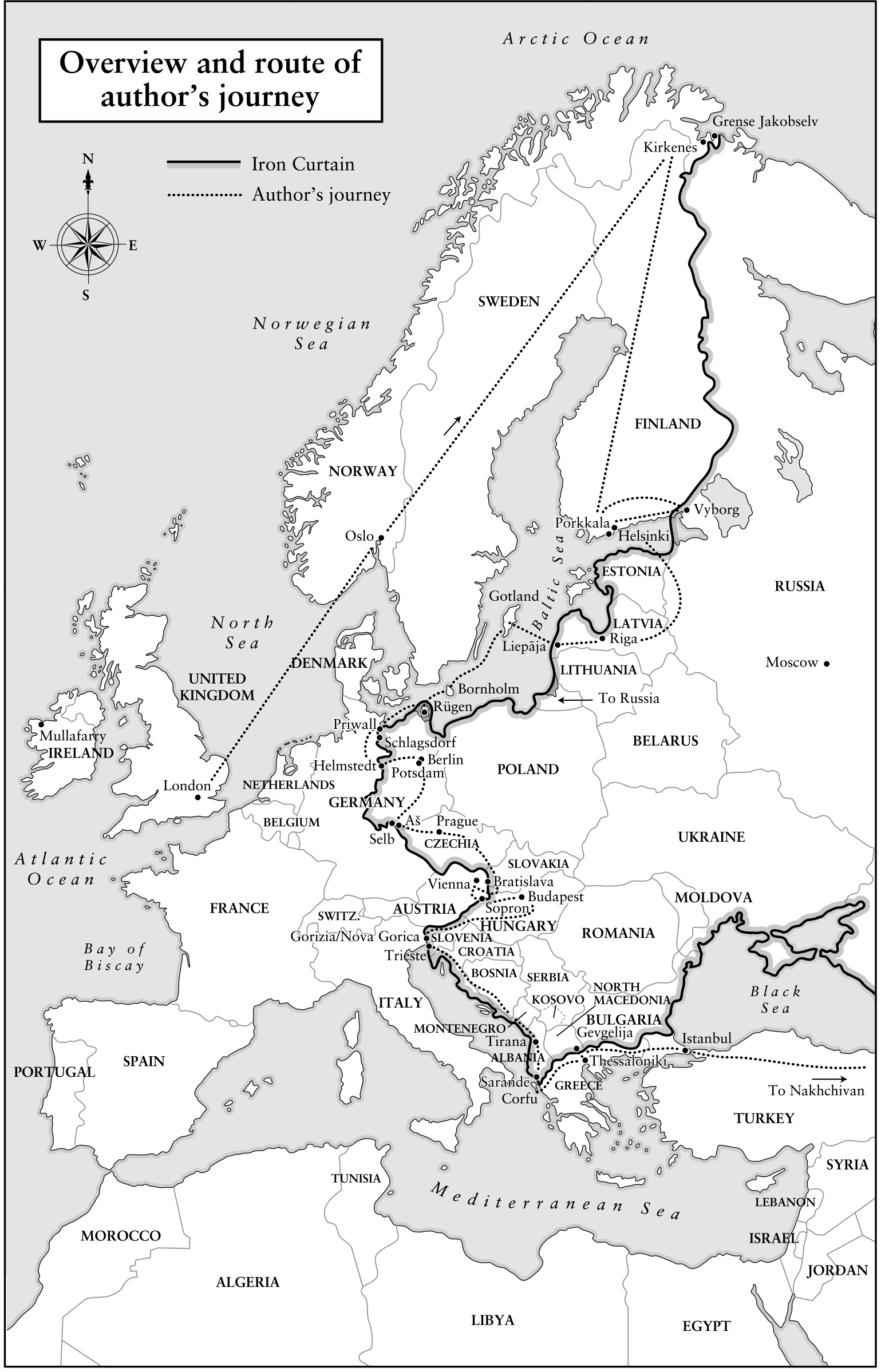
Authors Note
Across Europe, the morning of 24 February 2022 was one of those moments when the course of history suddenly seemed to change. Hundreds of millions of people woke to the news that Russias president, Vladimir Putin, had instigated a full-scale war against his countrys neighbour Ukraine. Millions inside Ukraine were wrenched from their sleep by the literal impact of the first missiles; they have not slept easily since. Countless more beyond the countrys borders felt the geopolitical shockwaves those detonations caused. As I write, we all continue to wonder what Putins war will mean for the future peace of the world.
The book you are about to read is an account of my journey along the entire route of the old Iron Curtain. As I travelled, back in 2019, I found people frequently wanting to talk about the conflicts Russia had already caused in eastern Ukraine and about its illegal annexation of Crimea. Contrary to some recent reports, many experts and ordinary people knew then, before the massive escalation in hostilities, that Putin was a leader dangerously obsessed with power, with few if any limits on his behaviour, that he was a man fundamentally out of control. The debate about whether his particular acts of violence in 2022 were foreseeable will rage for decades. But what is already clear is that these events have special resonance for anyone who ever lived near the Iron Curtain.
On my recent travels, I thought often about my own first trip to the former USSR, to the Ukrainian cities of Kyiv, Zhytomyr and Uzhhorod back in 1995. I was still a schoolboy and it was an intense, magical experience. But the Ukraine I was visiting, like much of Eastern Europe, was a place of chaos and distress. Ukrainians have come so far in the intervening decades. And now those in the Kremlin with an addiction to the past are trying to destroy their gains, as well as Russians own progress, as they pursue a nostalgic misreading of what Russia really deserves. It is an abhorrent state of affairs.
The pages that follow are not a blueprint for how to respond to naked aggression of this sort or to the very real prospect of a new Iron Curtain, a new border of borders, being driven through the continent. But they do show in new detail how Europeans survived and eventually triumphed over the last great divide to sever them. I have been fortunate enough to become the custodian of many precious stories: stories of hatred, fear and distrust, but also of courage, connection and activism. It is a privilege to share them with you.
The Cold War had more than its fair share of moments of truth. Some of you will remember them at first hand, and will recall how sometimes humanity failed to rise to the challenge: in Hungary in 1956, in Prague in 1968, and elsewhere. Fortunately, we can also recall times when people did find a way through, most notably in 1989, that year of dismantled concrete and torn-down fences. I have no doubt we are living through another moment of truth, a moment when we all must find ways to rise to the challenge, for Ukraines sake and also for our own.
Timothy Phillips
London, July 2022
Preface
Mullafarry, Republic Of Ireland
If you live long enough, the borders change. Borders seem so immutable, so fixed. They really want us to believe that they are. But history tells a radically different story, especially the history of the last hundred years.
Broken, breached, overrun, and then reimposed, only to be erased once more, borders are as solid as cast iron but as brittle as rust. They govern our lives. Often they ruin lives. In many ways they are the ultimate proof of a states power, but they are also the work of transient men and women, and as such are transient themselves.
I first realized something of the meaning of borders when I was six years old. I grew up in Northern Ireland in the Troubles, and for my parents, as for just about every other adult, the rhythm of daily life was punctuated by news of bomb attacks, incendiary devices, kidnappings, kneecappings and murders, all motivated in one way or another by a border. There were plenty of children whose lives were blighted by these events, but I was fortunate to have no direct experience of them, or of the border, until one day when I ended up in a car heading south with my little brother, my parents and my maternal grandparents.

